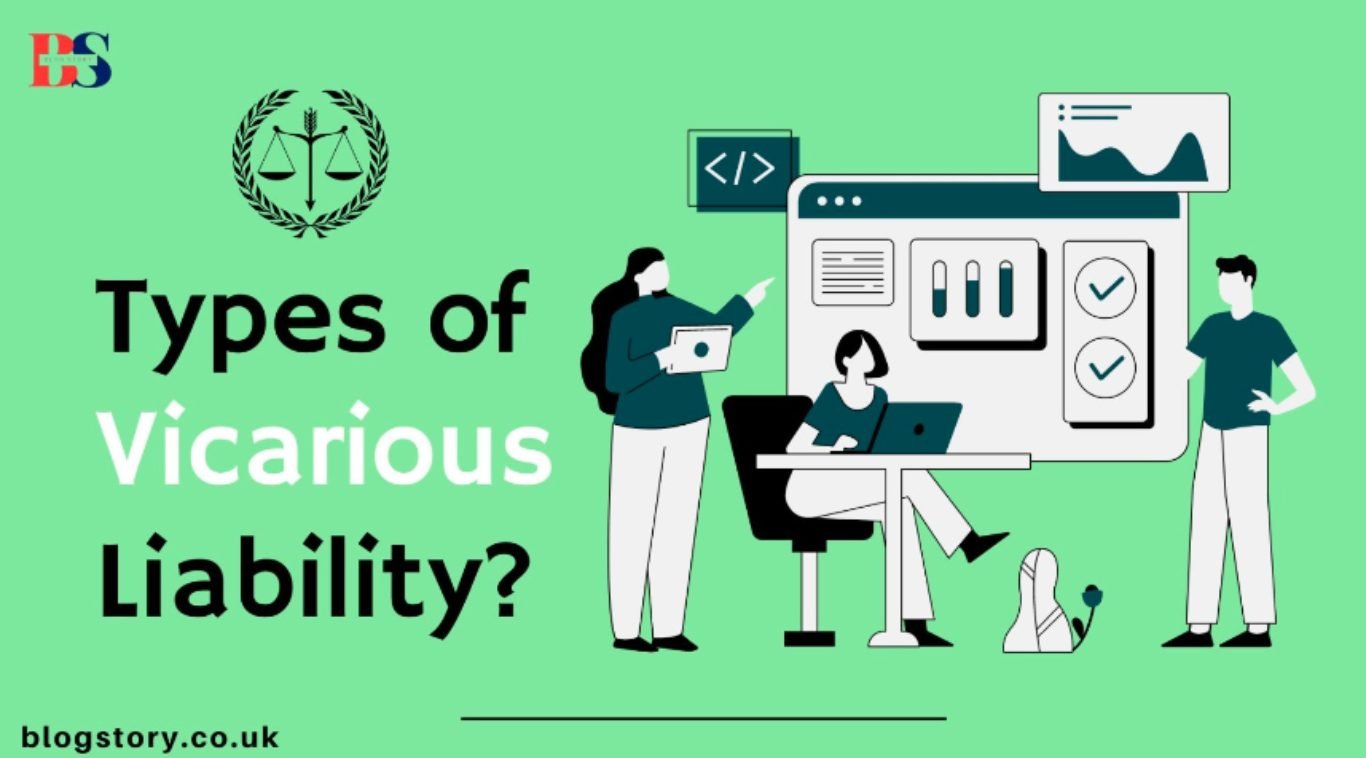
Understanding Vicarious Liability UK
Ever wondered why an employer is liable for any wrongful acts committed by an employee? Or why a business owner is liable for his staff? The concept is known as vicarious liability. In this article, we delve into the intricacies of vicarious liability in the UK, providing a thorough understanding of its implications.
But What is it and Who Falls Under Vicarious Liability UK?
Vicarious liability UK is a doctrine under British tort law that imposes strict liability on employers for any wrongdoings committed by their employees. But, the doctrine also comments that the employer is only held liable for the employee during working hours. Vicarious liability in the UK has recently expanded based on the verdict in Lister v Hesley Hall Ltd – where intentional torts such as sexual assault and deceit have been brought under the banner of vicarious liability.
Some other acts included under vicarious liability in The UK are:
- Harassment and bullying
- Breach of trust or confidentiality
- Any discriminatory acts
But, one grey area with vicarious liability is proving whether the employee was acting in any personal capacity or whether it was during their term of employment.
What is The Purpose of Vicarious Liability?
Vicarious Liability UK is designed to protect the victims with the appropriate remedy. This remedy must be provided by the employer provided that there is a connection between the wrong committed and the employment.
When there is a sufficient connection between the employee’s job role and the wrongdoing, then it is held that the employer is vicariously liable.
Is There Any Difference Between Full Liability and Vicarious Liability in The UK?
While vicarious liability in Britain and full liability do overlap in terms of definitions, they are two separate forms in themselves.
Full liability refers to instances where the employer is directly responsible for their wrongful acts or any acts of their employees authorized by them that cause loss or harm to a third party.
Some types of full liability include incidents such as:
- Wilful negligence
- Unlawful discrimination
- Harassment at work
- Racial discrimination
On the other hand, vicarious liability UK means when there is no clarity on whether the employee was authorized by the employer to commit any wrongful act. The latter is then liable because of the connection that is created between the employment and the wrongful act.
Are There Any Legal Tests To Establish Vicarious Liability UK?
When a case of vicarious liability UK comes to a court, two legal tests need to be satisfied before it can be considered:
Relationship test, Close connection test.
1. Relationship Test: This means that there must be a direct relationship between the employer and the employee. Only then will the employer be made to pay for the fault of the wrongdoings committed by the employee?
2. Close Connection Test: This test shows that there must exist a connection between employment and wrongdoing. If it can be proved that the wrong action is in direct correlation to the authorization of the employer then it is considered a vicarious liability.
Let us understand these two tests with a simple example.
Z, a truck driver, works for B in the company DFG. He has been employed to deliver goods from the factory to the stores by B. One day B’s shipment is late and he orders Z to drive as fast as he can to make all the deliveries on time. During the delivery, Z crashes into a car. In this case, B will be held vicariously liable UK as he was the one who instructed Z to drive fast.
Now, let us take a look at another example to show the difference when vicarious liability UK is not applicable.
Z, a truck driver, works for B in the company DFG. He has been employed to deliver goods from the factory to the stores by B. One day after work, Z meets with an accident and hits another car. In this case, B is not liable as it was not during the working hours of Z and neither was it related to the authorization of B.
What is The Scope of Employment in The Case of Vicarious Liability UK?
Any action that the employee undertakes that is related to his terms of employment is considered to be a part of his scope of employment. Depending on the relationship between the employer and the employee, the requirements of the job, and the number of people on the job – the scope of employment may vary.
But there are situations where the employee does not fall under the scope of employment. These are:
1. Independent Contractors:
An independent contractor is not considered to be an employee because they are not working under the scope of employment of the employer. Although their work is being directed by the employer, there is no such liability created for the employer.
2. Illegal Actions:
Any illegal activity, that is not directed or controlled by the employer, does not fall under the scope of employment. Let us take an example here – A is B’s driver. After dropping B at his office, A goes for a drive and hits C. In this case, B is not liable as he had no idea about A’s drive or if was it during employment.
What is The Scope of Vicarious Liability in The UK For Different Workers?
We know that an employer is liable for any wrongful act committed by his employees during the scope of employment. But what is the scope when the person is a quasi-employee or an independent contractor?
As a general rule, employers are not vicariously liable for their independent contractors’ wrongdoings committed during the performance of the task. Independent contractors have their service contracts and carry the burden of risk themselves. So, if an independent contractor causes harm to anyone during employment, they are liable.
But, when it comes to quasi-employees or non-employees, in some situations, it can be treated as direct employment.
In the case of Barclays Bank plc v Various Claimants (2020) UKSC 13, the Supreme Court confirmed that a certain number of policy factors that may be considered to be fair, just, and reasonable via which they can impose vicarious liability the UK on employers for any wrongful acts committed by contractors.
These factors are the following.
- Any act where any wrongful act is committed on behalf of the employer.
- Any act which is inclusive of the employer’s business.
- Any act, whereby the employer employed a contractor to carry out the activity, therein created the risk of wrongdoing.
- Where the contractor’s actions were directly related to the employer’s decisions.
In other situations, Barclays was not found to be liable vicariously for the sexual assault claims against the independent medical practitioner they had referred their prospective employees to for fitness approvals.
While the court commented that because the doctor saw other patients (other than those referred by Barclays) he wasn’t paid a retainer fee and could refuse the referral. However the court also recognized that several factors need to be taken into account when deciding whether the relationship that existed was similar to employment or not.
How Can You Manage Vicarious Liability in The UK Risks As An Employer?
As an employer risks due to vicarious liability UK can take a heavy toll on finances and business reputation.
But there are some steps you can take to minimize the risks involved with vicarious liability.
1. Provisions for workplace policies that minimize the change of wrongdoings.
2. Policy training in areas such as harassment, victimization, data protection health, and safety.
3. Creating awareness in employees about the concepts of negligence, unlawful conduct, breach of duty, etc.
4. Taking preventive steps to stop bullying like an Anti-bully squad, or Women’s cell in the workplace.
Another important aspect that employers need to look into in these recent COVID-19 times is any potential risks arising from work-from-home policies. Especially lack of supervision in the workspace at home can cause a larger range of statutory duty breaches. Here, employees can take the following steps to reduce remote-working risks:
1. Remind staff working from home about the procedures and policies of data protection.
2. Providing additional training for maintaining the confidentiality of data.
3. Conducting risk assessments around working from home.
4. Increase liability insurance.
5. Keep the communication lines open to properly supervise and check the progress of all day-to-day activities of employees.
Conclusion
Vicarious liability in the UK deals with situations where one person is liable for the wrong actions of another. This being said, the person liable must be at a superior level to the person committing the wrong. Also, the wrong must be committed while in the course of employment.
So, unless there is an employment agreement set up, vicarious liability UK cannot be considered. But now with the present remote-working scenario, there is a lot of grey space, especially when considering the security of information and data breaches. This is why lawmakers are now trying to modernize the concepts of vicarious liability to include a broader spectrum.
You May Like Also:













7 thoughts on “Understanding Vicarious Liability UK”